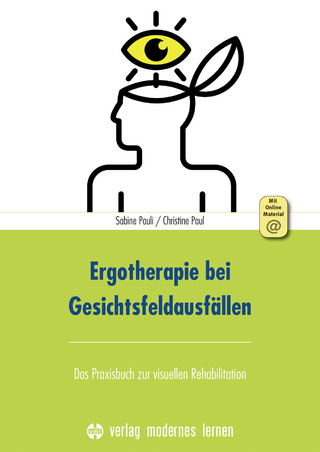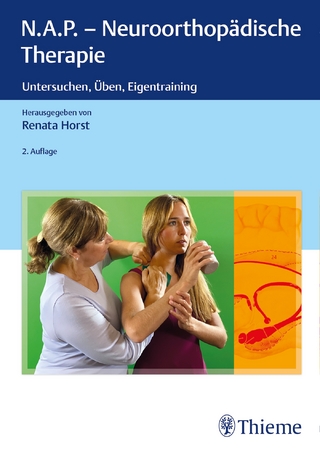
Locomotor Training
Oxford University Press Inc (Verlag)
978-0-19-534208-6 (ISBN)
Physical rehabilitation for walking recovery after spinal cord injury is undergoing a paradigm shift. Therapy historically has focused on compensation for sensorimotor deficits after SCI using wheelchairs and bracing to achieve mobility. With locomotor training, the aim is to promote recovery via activation of the neuromuscular system below the level of the lesion. What basic scientists have shown us as the potential of the nervous system for plasticity, to learn, even after injury is being translated into a rehabilitation strategy by taking advantage of the intrinsic biology of the central nervous system. While spinal cord injury from basic and clinical perspectives was the gateway for developing locomotor training, its application has been extended to other populations with neurologic dysfunction resulting in loss of walking or walking disability.
Dr. Susan J. Harkema PhD, Associate Professor holds the Owsley B. Frazier Rehabilitation Chair in Neurological Surgery and is the Rehabilitation Research Director of the Kentucky Spinal Cord Injury Research Center at the University of Louisville. She is the Director of Research at Frazier Rehab Institute and is Director of the NeuroRecovery Network that provides standardized activity-based therapies for individuals with spinal cord injury at seven national rehabilitation centers in the United States. Her research focuses on neural plasticity of spinal networks and recovery of function after spinal cord injury. Dr. Behrman is an Associate Professor in the Dept of Physical Therapy, College of Public Health and Health Professions at the University of Florida and a Research Health Scientist at the VA Brain Rehabilitation Research Center, Malcom Randall VA Medical Center. She also is a co-Director of the Christopher and Dana Reeve Foundation NeuroRecovery Network translating evidence for activity-based therapies into clinical practice. Her research targets developing "best practice" for walking recovery after neurologic injury using principles of activity-dependent plasticity and an understanding of the neurobiology of walking. Dr. Barbeau was part of the first group that developed the locomotor training in SCI and stroke subjects in the early 80s. He has had a significant contribution to the development of functional electrical stimulation and the drugs on the locomotor pattern in the SCI subjects.
Chapter 1
Evidence Based Practice and Activity Based Therapy for Recovery of Posture, Standing, and Walking
I. Rehabilitation of Walking after Neurologic Injury or Disease: A Historical Perspective
II. Recovery of Posture and Walking following Spinal Cord Injury
1. Functional deficits following spinal cord injury
2. Compensatory rehabilitation after spinal cord injury
III. Recovery of Posture and Walking following Stroke
1. Functional deficits following stroke
2. Rehabilitation after stroke
IV. Evidence Based Practice
1. Evidence-based, restorative strategies for rehabilitation after neurologic insult: Locomotor Training
Chapter 2
Scientific and Physiological Evidence for Locomotor Training
I. Neural Control of Locomotion
a. Central Pattern Generation
b. Interaction of Sensory Input with Spinal Cord Interneuronal Networks
c. Activity-dependent Plasticity; Task Specific Retraining
II. Evidence of Sensory Processing by Human Spinal Networks
III. Translation of Scientific Evidence into a Rehabilitation Intervention
a. Activity-Based Therapy (Locomotor Training)
i. Maximize weight bearing on the legs (Principle 1)
ii. Optimize sensory cues (Principle 2)
iii. Optimize the kinematics (i.e. trunk, pelvis, and lower extremities) for each motor task (Principle 3)
iv. Maximize recovery strategies, minimize compensation strategies (Principle 4)
b. Clinical Evidence for Functional Recovery in Spinal Cord Injury
c. Clinical Evidence for Functional Recovery in Stroke
d. Severity of Locomotor Impairment
Chapter 3
Locomotor Training as an Activity-Based Therapy for Posture, Standing, and Walking
IV. Compensation Based Rehabilitation to Activity-Based Therapy
a. Compensation Approaches
b. Activity-Based Therapy
V. Locomotor Training Principles
a. Maximize Weight Bearing on the Legs
b. Optimize Sensory Cues Appropriate for Specific Motor Task
c. Optimize Kinematics for each Motor Task
d. Maximize Recovery, Minimize Compensation
VI. Locomotor Training Therapeutic Components
a. Step Training
b. Over Ground Assessment
c. Community Integration
VII. Phases of Recovery
a. Phase 1
b. Phase 2
c. Phase 3
d. Phase 4
VIII. Areas of Progression
a. Endurance
b. Speed
c. Weight-Bearing (Load)
d. Independence
IX. Clinical Model
a. Equipment
b. Staffing
c. Clinical Guidelines
Chapter 4
Basic Skills for the Implementation of Locomotor Training
I. Proper Attire, Harness Application, and Support Apparatus
a. Proper Client Attire
b. Applying the Harness
i. Pelvic Belt Placement
ii. Harness Vest Placement
iii. Leg Strap Placement
iv. Final Adjustments and Troubleshooting Harness Fit
c. System Requirements
d. Positioning the Client on the BWST
II. Client and Trainer Positions during Standing
a. Client Position
b. Hip Trainer
c. Leg Trainers
III. Client and Trainer Positions during Stepping
a. Client Position
b. Hip Trainer
c. Leg Trainers
d. Alternate Hand Placements
i. Reverse Hand Placement
ii. Modified Standard Hand Placement
Chapter 5
Basic Skills for Retraining the Nervous System
I. Locomotor Training: The Step Training Component
a. Step Retraining
i. Weight bearing
ii. Appropriate Kinematics
iii. Appropriate Kinetics
b. Step Adaptability
i. Trunk Independence
ii. Pelvis Independence
iii. Leg Independence
c. Stand Retraining
i. Load Bearing of the Legs
ii. Appropriate Kinematics
d. Stand Adaptability
i. Trunk Stability
ii. Independent Pelvis
iii. Leg Independence
iv. Sit to Stand
II. Team Roles
a. Client
b. Team Leader
c. Hip Trainer
d. Leg Trainer(s)
e. Body Weight Support Treadmill Operator
Chapter 6
Introduction to Over Ground Assessment and Community Integration
I. Over Ground Assessment
a. Trunk Stability
b. Sit to Stand
c. Stand
d. Initiating Walking
i. Upright Posture
ii. Weight Shift
e. Optimal Walking Pattern
II. Community Integration
a. Introducing Assistive Devices
b. Trunk Stability
c. Sit to Stand
d. Stand
e. Initiating Stepping and Good Stepping
Chapter 7
Phases of Recovery
I. Introduction to Four Phases of Recovery
II. Abilities during Step Training
a. Stand Retraining
b. Stand Adaptability
c. Step Retraining
d. Step Adaptability
III. Abilities during Over Ground Assessment
a. Sit
b. Reverse Sit Up
c. Sit Up
d. Trunk Extension in Sitting
e. Sit to Stand
f. Stand
g. Walking
IV. Goals by Phase of Recovery and Locomotor Training Component
a. Phase 1 Goals
i. Step Training
ii. Over Ground Assessment
iii. Community Integration
b. Phase 2 Goals
i. Step Training
ii. Over Ground Assessment
iii. Community Integration
c. Phase 3 Goals
i. Step Training
ii. Over Ground Assessment
iii. Community Integration
d. Phase 4 Goals
i. Step Training
ii. Over Ground Assessment
iii. Community Integration
V. Appendix
a. Phase Scoring Sheet
b. Phase Sheet Cards
Chapter 8
Progression to Recovery
I. Introduction to Progression
a. Four areas of progress
i. Endurance
ii. Speed
iii. Load
iv. Independence
II. Progression by Phase of Recovery and Locomotor Training Component
a. Phase 1 Progression
i. Step Training
ii. Over Ground Assessment
iii. Community Integration
b. Phase 2 Progression
i. Step Training
ii. Over Ground Assessment
iii. Community Integration
c. Phase 3 Progression
i. Step Training
ii. Over Ground Assessment
iii. Community Integration
d. Phase 4 Progression
i. Step Training
ii. Over Ground Assessment
iii. Community Integration
Index
| Zusatzinfo | 160 illustrations |
|---|---|
| Verlagsort | New York |
| Sprache | englisch |
| Maße | 254 x 180 mm |
| Gewicht | 558 g |
| Themenwelt | Geisteswissenschaften ► Sprach- / Literaturwissenschaft ► Sprachwissenschaft |
| Medizin / Pharmazie ► Medizinische Fachgebiete ► Neurologie | |
| Physiotherapie / Ergotherapie ► Rehabilitation ► Neuro-Rehabilitation | |
| ISBN-10 | 0-19-534208-9 / 0195342089 |
| ISBN-13 | 978-0-19-534208-6 / 9780195342086 |
| Zustand | Neuware |
| Haben Sie eine Frage zum Produkt? |
aus dem Bereich


